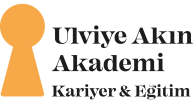NIMONIC MEMORY STRATEGIES SYSTEM

Nymonic memory strategies are techniques used to make information easier to remember. These strategies usually associate pieces of information visually, auditorily or semantically, allowing them to be better stored in memory. Dr. Ulviye Akın can use various methods and techniques when applying nymonic memory strategies. This strategy has been put forward with her master’s thesis and various article studies. Here is a detailed explanation of how Dr. Ulviye Akın applies nymonic memory strategies:
Nymonic Memory Strategies and Dr. Ulviye Akın’s Application Methods
1. Visual Nymonic
Definition:
Techniques that make it easier to remember information using visuals.
Application:
- Mind Maps: Create a visual map by categorizing and connecting information. This helps students organize and remember information better.
- Picture Cards: Provides students with cards that associate the words or concepts they need to learn with visual images. These cards make the information more permanent in memory.
2. Acrostic and Acronym
Definition:
Sentences or words formed from the first letters of words are used to make it easier to remember information.
Application:
- Acrostics: Create sentences that will remind students of the information they need to learn. For example, to remember the planets of the solar system, they can use the sentence “Sun, Mercury, Venus, Earth, Mars, Jupiter, Saturn, Uranus, Neptune”.
- Acronyms: Create acronyms that will make it easier to remember information. For example, to remember the color spectrum, they can use “ROY G. BIV” (Red, Orange, Yellow, Green, Blue, Indigo, Violet).
3. Story Method
Definition:
Aims to increase the retention of information in memory by presenting it in a story.
Application:
- Storytelling: Tells students a story that includes the information they need to learn. This story makes it easier to remember and memorize the information.
- Create Your Own Story: Encourages students to create stories that include their own learning materials. This method also develops students’ creative thinking skills.
4. Rhythm and Songs
Definition:
Rhythm and music are used to make it easier to remember information.
Application:
- Songs and Melodies: Teaches students songs that include the information they need to learn. Songs make it easier to remember information thanks to their rhythmic and melodic structure.
- Rhythmic Rhyme: Uses rhythmic rhymes and rhymes to remind them of information. For example, you can create rhymes and rhymes to remind you of math formulas.
5. Grouping and Categorizing
Definition:
Facilitates remembering information by dividing it into larger, meaningful groups.
Application:
- Categorizing: Teaches students to divide information into meaningful categories. For example, grouping historical events by time periods or dividing biology terms by organism types.
- Grouping: Presents numerical data or concepts to students in small groups. This method makes it easier to remember information.
6. Making Sense and Making Connections
Definition:
It provides meaning by associating information with existing information.
Application:
- Making Personal Connections: It allows students to associate the information they need to learn with their own life experiences. This makes the information more meaningful and permanent.
- Analogies and Metaphors: It uses analogies and metaphors to help students understand complex concepts. For example, comparing the atomic structure to the solar system.
Achieving Success with Dr. Ulviye Akın’s Methods
- Adaptation to Individual Learning Styles: Dr. Ulviye Akın evaluates students’ individual learning styles and needs. According to this evaluation, it determines which monic strategies will be most effective and implements them.
- Technology and Digital Tools: It implements monic strategies on digital platforms by using technology effectively. Educational applications, interactive learning tools and online resources are included in this process.
- Feedback and Assessment: It provides regular feedback to students and evaluates their progress. This helps students determine which areas they need more support in.
- Motivation and Encouragement: Keeps students motivated and celebrates their successes during the learning process. This allows students to participate more actively in the learning process.
Dr. Ulviye Akın aims to increase students’ access to information and their capacity to remember by using mnemonic memory strategies. These methods make students’ learning process more effective and fun, thus increasing their academic success.
